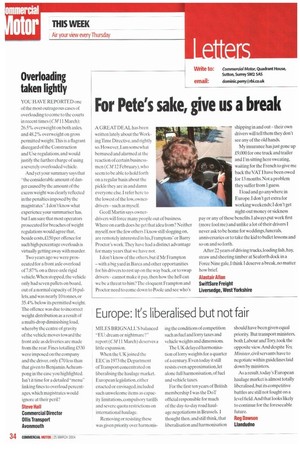Overloading taken lightly
Page 34

If you've noticed an error in this article please click here to report it so we can fix it.
YOU HAVE REPORTED one of the most outrageous cases of overloading to come to the courts in recent times (CM 11 March): 26.5% overweight on both aides. and 48.2% overweight on gross permitted weight.This is a flagrant disregard of the Construction and Use regulations, and would justify the further charge of using a severely overloaded vehicle.
And yet your summary says that "the considerable amount of danger caused by the amount of the excess weight was clearly reflected in the penalties imposed by the magistrates".1 don't know what experience your summariser has, but I am sure that most operators prosecuted for breaches of weight regulations would agree that, beside costs,£150 per offence for such high percentage overloads is virtually getting away with murder.
Two years ago we were prosecuted for a front axle overload of 7.87% on a three-axle rigid vehicle. When stopped, the vehicle only had seven pallets on board, out of a normal capacity of 16 pallets, and was nearly 10 tonnes,or 35.4% below its permitted weight. The offence was due to incorrect weight distribution as a result of a multi-drop diminishing load, whereby the centre of gravity of the vehicle moves toward the front axle as deliveries are made from the rear. Fines totalling £530 were imposed on the company and the driver, only £70 less than that given to BenjaminAcheampong in the case you highlighted. Isn't it time for a detailed "menu" linking fines to overload percentages, which magistrates would ignore at their peril?
Steve Hall Commercial Director






























































































































































































